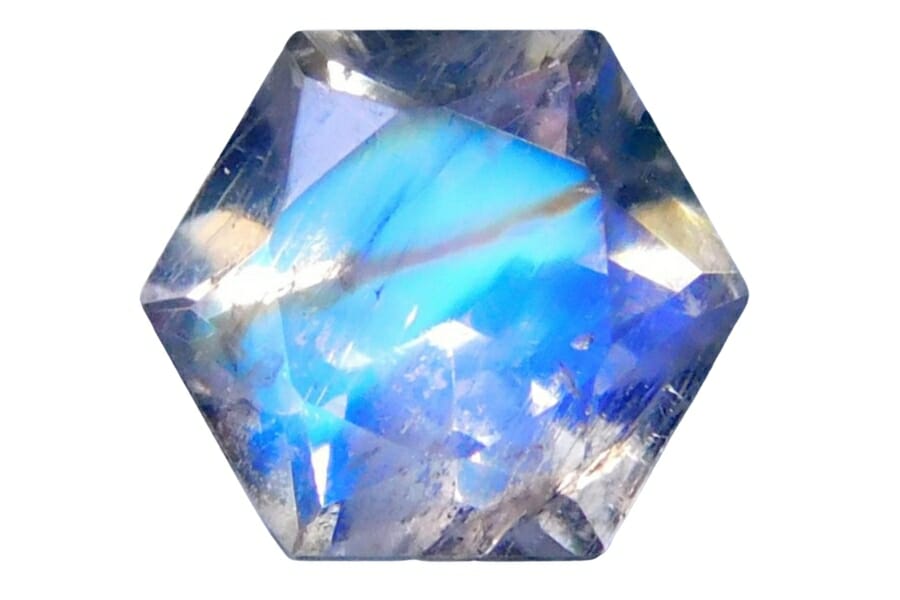If you’re looking for a treasure trove of fascinating rocks, minerals, and gems, Florida is the place to be! This sunshine state isn’t just about pristine beaches and thrilling amusement parks; it also hides some sparkling gems beneath its sandy surface.
From dazzling quartz that shines like stars in the night sky to beautiful agates with swirling patterns, Florida has a wide range of rocks that amaze you. But that’s not all! Keep your eyes open for unique fossils showing how this land has changed.
Imagine walking along the beach and coming across a piece of bright agatized coral or a rare seashell with many intricate details. Whether you’re a rock and mineral collector or a fan of Mother Nature’s work, the state’s rocks and minerals won’t disappoint you!
A List of The Common Rocks, Stones, and Minerals Found in Florida
There are many natural treasures in Florida, and if you want to see them, our helpful comprehensive guides will come in handy:
The Florida State Rock, Mineral, and Gem
First, let’s look at the rocks and minerals representing our state.
| Florida State Rock | Agatized Coral |
| Florida State Gem | Moonstone |
Visit the website of the Florida Department of Environmental Protection, which is in charge of regulating the activity in our state, to learn about the rules for collecting rocks and minerals.
Always Confirm Access and Collection Rules!
Before heading out to any of the locations on our list you need to confirm access requirements and collection rules for both public and private locations directly with the location. We haven’t personally verified every location and the access requirements and collection rules often change without notice.
Many of the locations we mention will not allow collecting but are still great places for those who love to find beautiful rocks and minerals in the wild without keeping them. We also can’t guarantee you will find anything in these locations since they are constantly changing.
Always get updated information directly from the source ahead of time to ensure responsible rockhounding. If you want even more current options it’s always a good idea to contact local rock and mineral clubs and groups
Agatized Coral
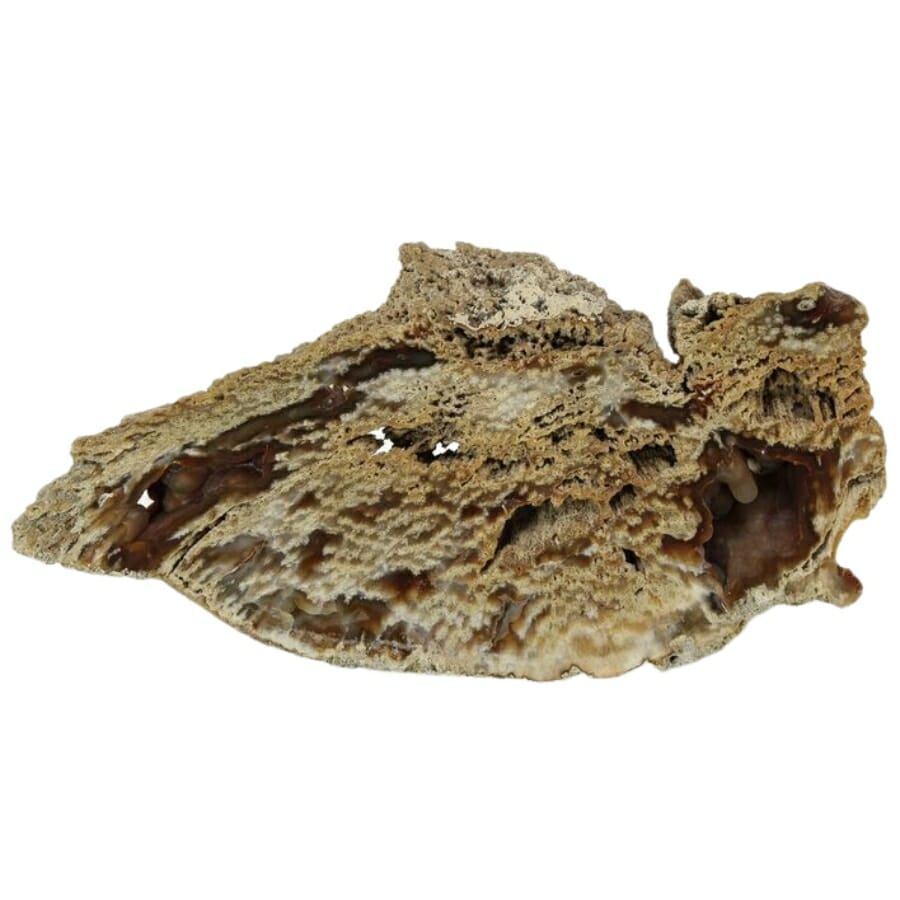
Agatized coral is a beautiful work of nature that combines ancient marine life with the beauty of a gemstone. This fantastic gem takes millions of years to form. It starts as coral colonies living in the oceans of the past.
When corals die, their calcium carbonate skeletons undergo silicification that excitingly changes them. Silica-rich fluids slowly replace the original mineral structure, leaving fossils of coral with agate embedded in them that are fascinating.
From delicate pastel hues to vibrant bursts of color, these fossilized treasures reflect the artistic mastery of Mother Nature.
Agatized coral is important for more than just its beauty; it is also essential for geology and history. It can tell us a lot about ancient ecosystems and how marine life has changed over time.
It’s also a popular gemstone among collectors and jewelry lovers because it is hard to find and takes a long time to form.
Where you can find Agatized Coral in Florida
Agatized coral is easy to find in Florida, especially in these places:
- Ballast Point
- Flor-a-Mar in Pasco county
- White Springs area
Calcite
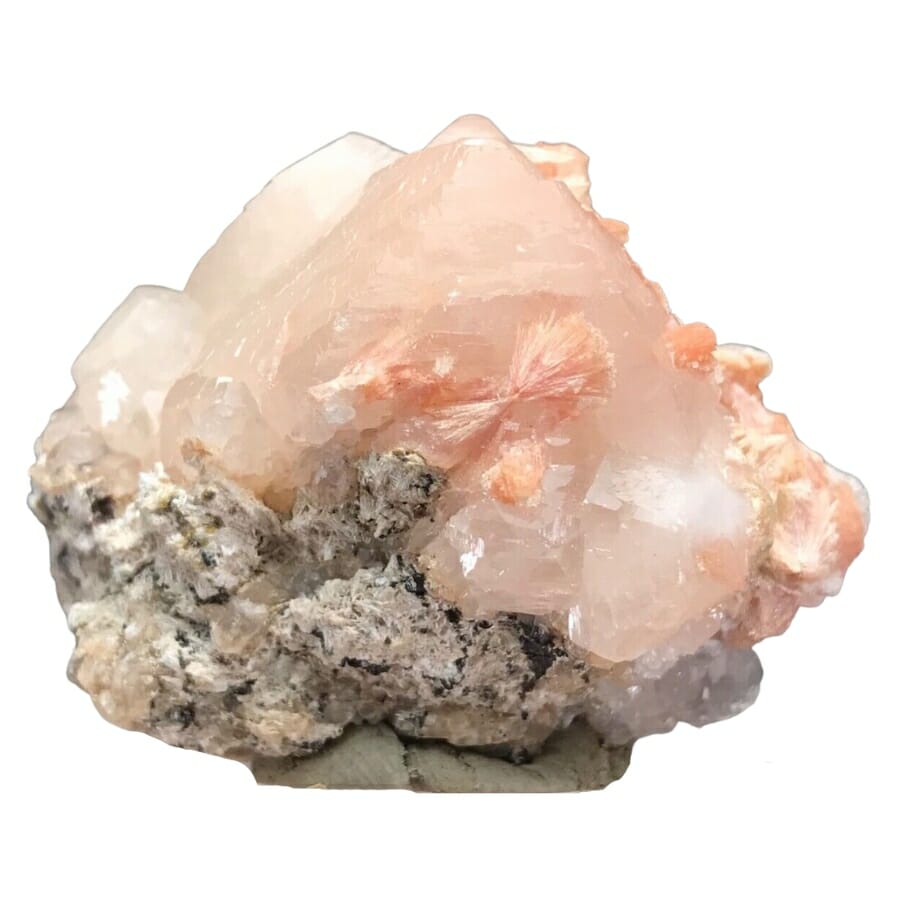
Calcite is made of calcium carbonate and is one of the most common minerals on Earth. It comes in many different shapes and colors that are beautiful to look at. Its intricate patterns and textures never fail to amaze.
It can look like glass-like crystals that reflect light in beautiful patterns or like delicate, fibrous structures that look like structures from another world.
Calcite formation is a fascinating process that occurs in various geological settings. It is commonly found in limestone caves, where water seeps through the rock and dissolves calcium carbonate from surrounding rocks.
As the water drips inside the cave, it leaves behind deposits that slowly build up over time, creating magnificent stalactites and stalagmites.
In other cases, it’s formed through the accumulation of shells and skeletal remains of marine organisms, shaping sedimentary rock formations that dot landscapes across the globe.
The allure of calcite extends beyond its aesthetic appeal; it holds significant value in various industries and scientific fields. As a primary component of limestone, calcite is crucial in manufacturing cement, fertilizers, and building materials.
Its ability to react with acids makes it an essential mineral in soil remediation and water purification. In addition, its role in recording environmental conditions through its growth patterns aids researchers in understanding ancient climate changes.
Its diverse range of applications and intrinsic scientific importance solidifies calcite’s status as a precious mineral that continues to be treasured by both enthusiasts and experts worldwide.
If you’re curious to know how much calcite is worth, you can visit the article we’ve written for more information.
Where you can find Calcite in Florida
Calcite can be found in many places in the state, such as:
- Crystal River
- Hillsborough River State Park
- Vero Beach
- Wayne Ranch
Chert
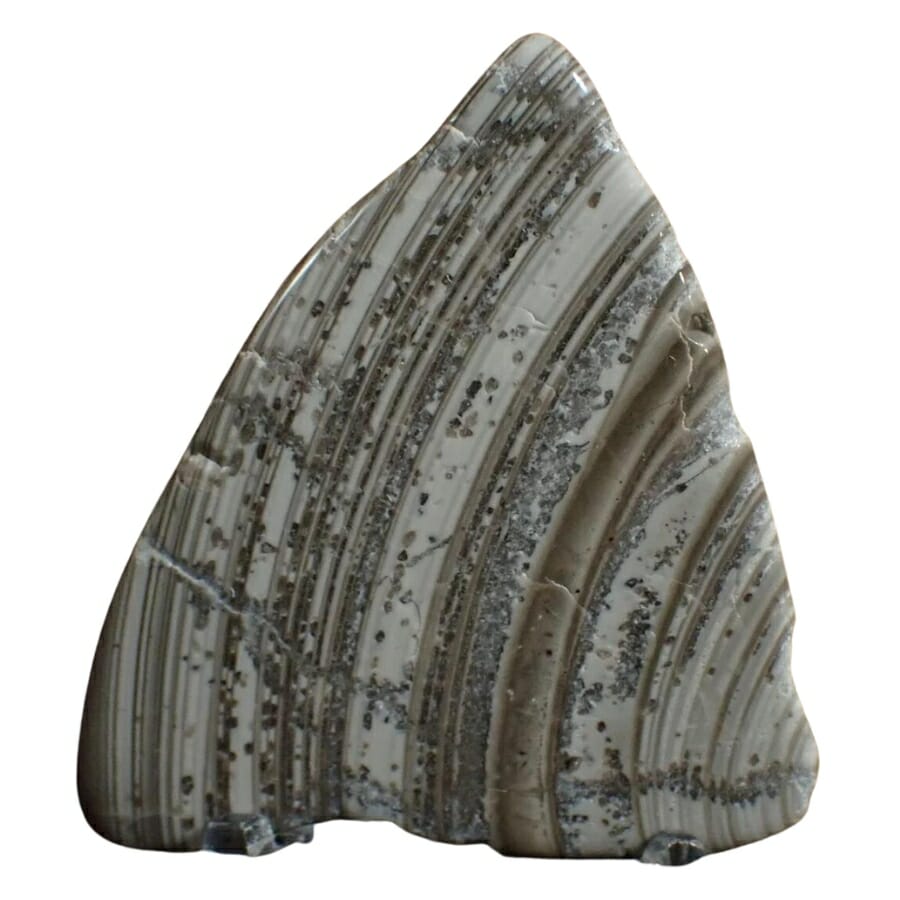
Chert is a fascinating rock with an extended geological history that has amazed people for thousands of years. It’s made chiefly of microcrystalline quartz and comes in many different colors and textures.
This makes it a versatile and interesting material. This rock is made through a process called diagenesis. Over millions of years, silica-rich sediments are pressed together, and their chemicals change.
The result is a dense, hard, and fine-grained rock that ancient people used to make tools, weapons, and art.
Chert has been useful and important as a cultural material throughout history, which is where its value lies. It was highly valued in the past because it was hard and durable.
This made it a great material for making stone tools, arrowheads, and spear points. Its small grains also made it easy to carve in detail, which led to it being used to make intricate ornaments and ritual objects.
Even now, archaeologists still study chert because looking at chert artifacts can teach us a lot about the cultures and trading networks of the past.
Chert is still a treasured and respected part of Florida’s geological history because it looks nice and has historical value.
Where you can find Chert in Florida
You can find chert in the following places:
- Area creeks and streambeds of Cottondale
- Regional limonite quarries of Alachua County
- Regional limonite quarries of Marion County
Gypsum
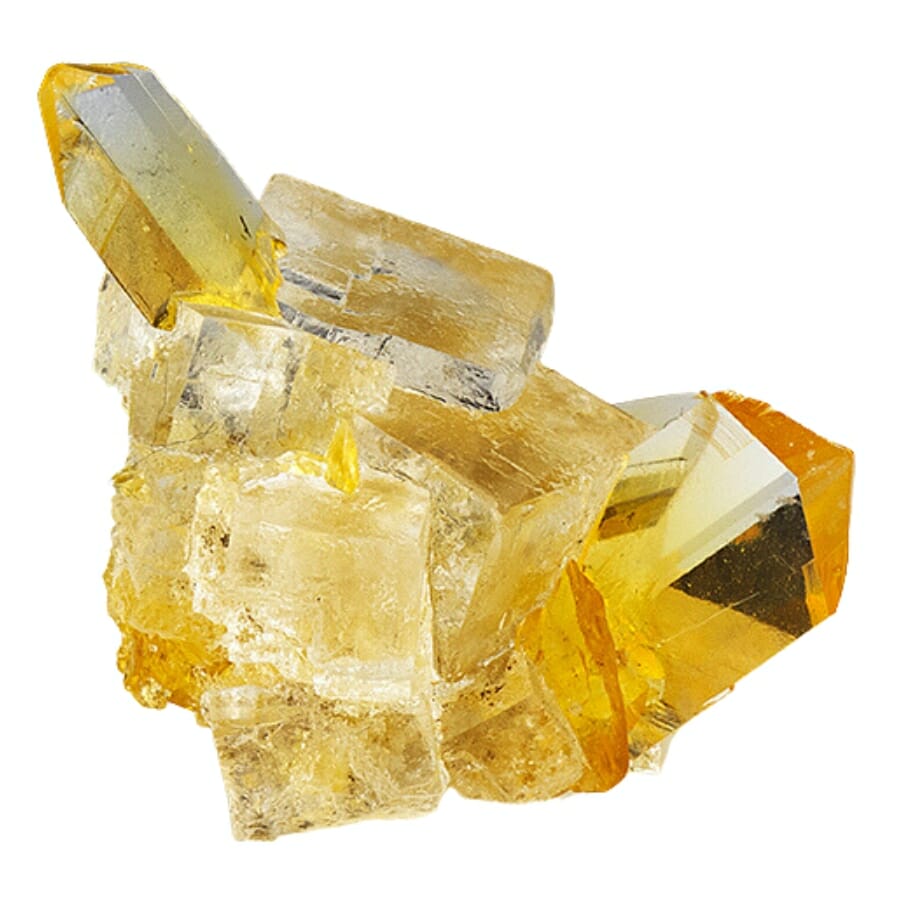
Gypsum is a natural wonder that can be used in many ways. It’s composed of hydrated calcium sulfate and comes in many forms, from clear crystals to big white rocks.
It’s made when seawater or mineral-rich groundwater slowly evaporates in ancient marine basins and saline lakes, leaving behind concentrated deposits. Geological changes happen to these deposits over millions of years, turning them into the gypsum we use today.
The value of gypsum extends beyond its visual appeal; it holds significant importance in various industries. One of its primary applications is in the construction sector, where it manufactures plaster, drywall, and cement.
Its fire-resistant properties make it an excellent choice for building materials. Moreover, it’s essential in agriculture, as it acts as a soil conditioner and helps improve crop yields.
Gypsum is also widely used in medical and dental practices, where it serves as a critical ingredient in creating plaster casts and molds. With its versatility and practical applications, it remains an invaluable mineral that continues to be cherished and utilized worldwide.
Where you can find Gypsum in Florida
Gypsum is found in areas around Polk County.
Ilmenite
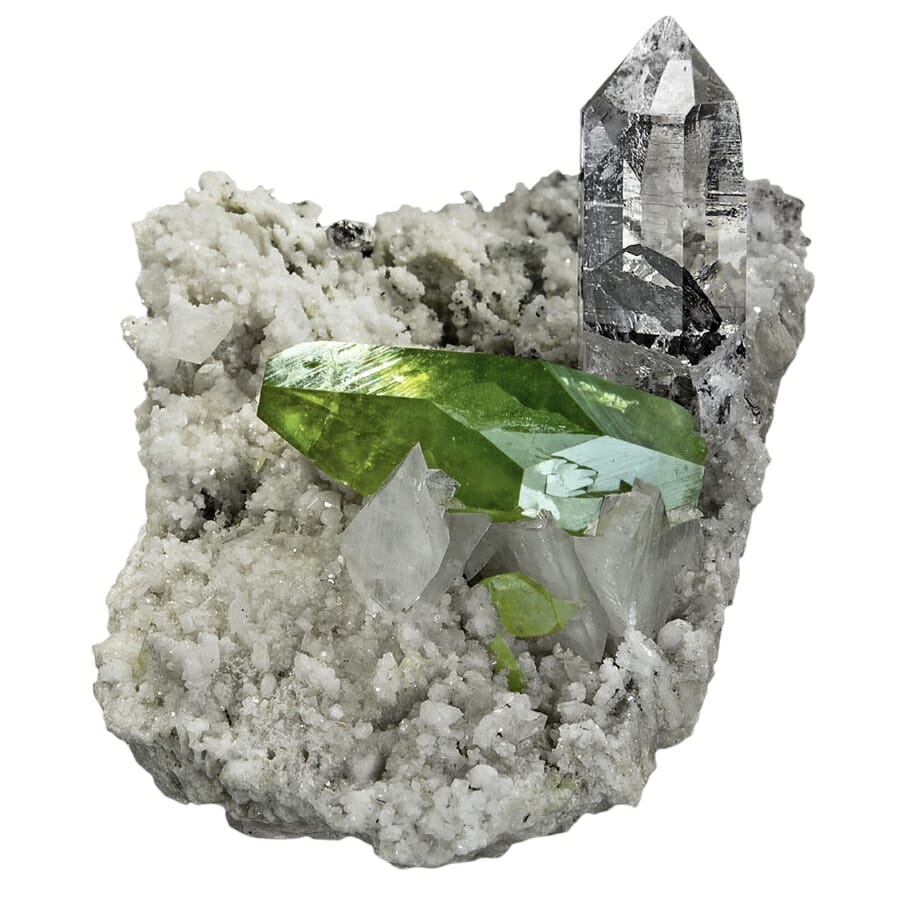
Ilmenite is an intriguing mineral with a beautiful metallic shine. It’s a great example of how geological processes work in nature. It’s usually found in heavy mineral sands, igneous rocks, and metamorphic formations.
It’s mostly made up of iron titanium oxide. It forms through the gradual accumulateion of heavy minerals over time, as wind and water erode the parent rocks and concentrate the denser ilmenite grains.
The combination of its striking black color and high titanium content makes ilmenite a valuable resource with numerous industrial applications.
It’s valuable because of how essential it is to the titanium industry. As the main ore of titanium, it serves as a vital source for this valuable metal, which is used for airplane parts, spacecraft parts, and medical implants.
Its lightweight, high strength, and corrosion-resistant properties make titanium an essential material in advanced technology and aerospace. Moreover, ilmenite is also utilized in the production of ceramics, pigments, and welding rods.
With its versatility and indispensable role in modern industries, ilmenite remains a prized mineral that continues to shape our technological advancements.
Where you can find Ilmenite
You can find ilmenite in these places below:
- Highland Mine
- Skinner Mine
The Gemstones Found In Florida
Let’s find out more about the gems that can be found in Florida. If you want a full guide, we’ve put together a list of the detailed articles we’ve written:
Agate

Agate, a mesmerizing gemstone cherished for its exquisite bands of color and unique patterns, is a natural masterpiece that never fails to captivate. It’s a variety of chalcedony, which is a form of quartz, and is characterized by its fine-grained and translucent appearance.
It forms when silica-rich fluids slowly fill cavities in rocks, such as volcanic or sedimentary rocks. Over time, these fluids cool and harden, giving birth to the striking layers of color and intricate designs that define this gem.
Agate is more than just pretty; it also has a lot of meaning in different cultures and religions. In the past, it symbolized strength, courage, and peace to the person who wore it.
It has also been a sign of wealth and power in different times and places. It’s still highly valued in the world of jewelry and decorative art because it can be used in many different ways and has a timeless beauty.
Each piece of agate is different because of its many colors and patterns. This shows how beautiful and artistic nature can be.
Where you can find Agate in Florida
Here are the places in the state where you can find agate:
- Caladesi Causeway
- Creek beds of White Springs area in Hamilton county
- Gulf Beach
- Hillsborough River State Park
- Stephen Foster Memorial Park
If you want to learn more about agates in Florida, check out our guide to many more places where you can find it.
Amethyst
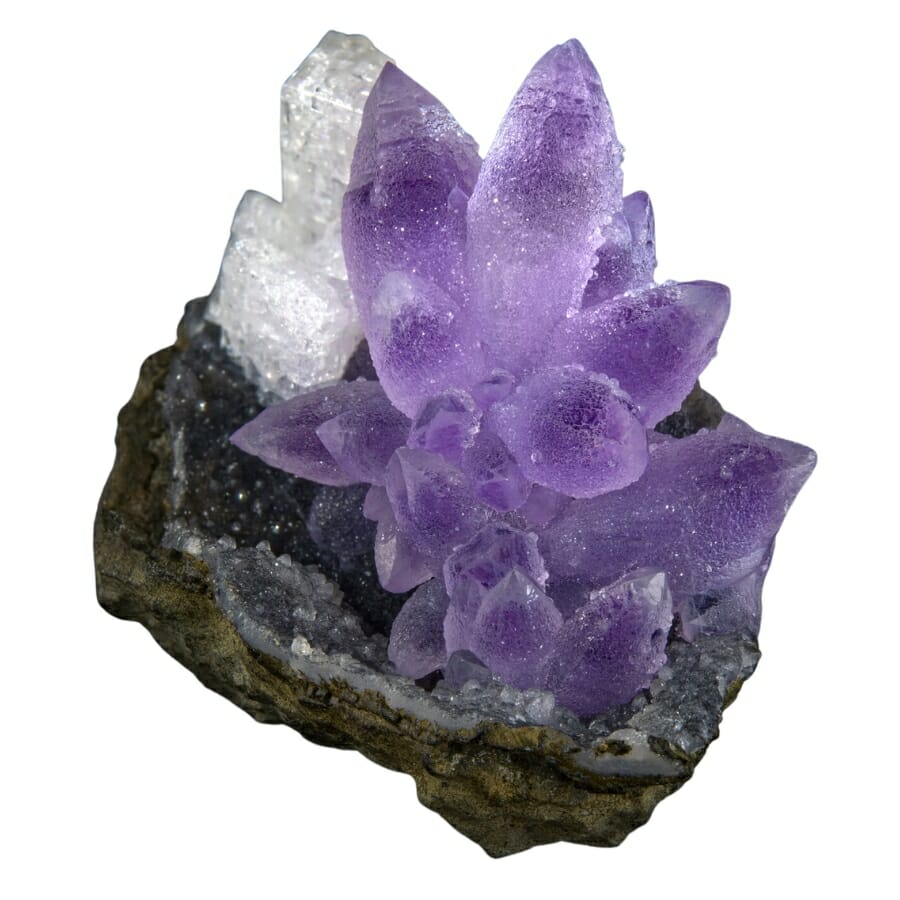
Amethyst, a breathtaking purple gemstone, symbolizes elegance and spirituality that has enchanted humans for centuries. It’s a variety of quartz, and its enchanting color results from trace amounts of iron impurities during its formation.
It also forms in geodes, which are hollow cavities within rocks lined with crystals. As groundwater carrying silica slowly enters these cavities and cools, it allows amethyst crystals to grow over time.
The beautiful shades of purple, ranging from pale lavender to deep violet, make it` one of the most sought-after gemstones in the world. Ancient people thought that amethyst could heal and protect them.
Its calming energy and connection to inner peace and balance make it a popular gemstone for people who want to feel emotionally and spiritually well. People worldwide highly value amethyst because of how it looks and what it can do for them.
Where you can find Amethyst in Florida
Here are the most common places where amethyst can be found in the state:
- Fort Drum Crystal Mine
- Lost Mines of Atlantis
Carnelian
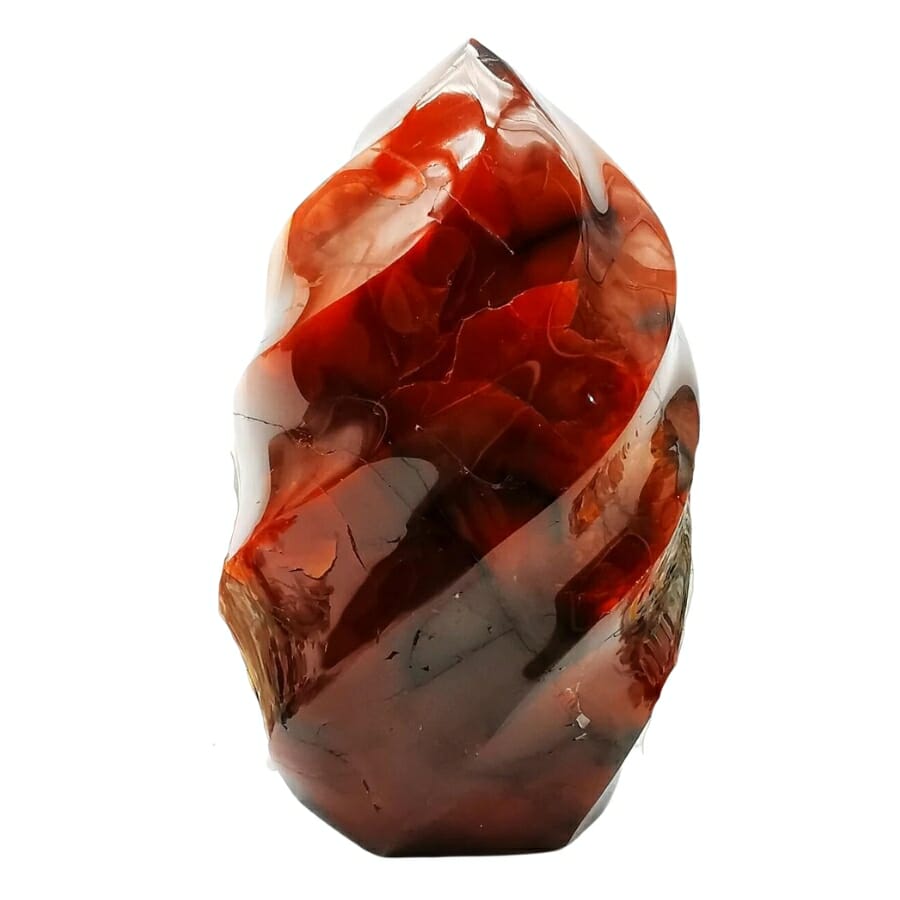
Carnelian, a striking gemstone with warm shades of red and orange, is a gem that has been admired throughout history for its vibrant beauty. It’s a type of chalcedony, a variety of quartz, and owes its distinct color to iron oxide impurities.
It can form in many different places, such as in volcanic rocks, sedimentary deposits, or hot springs. As water with lots of silica seeps through the ground, it fills the holes in these rocks.
This lets the crystals of carnelian grow slowly over time. The result is a gemstone with a rich color palette and a clearness that makes it look like the sun is setting.
This interesting mix shows how the organic and mineral worlds combine to make a beautiful piece of natural art. Carnelian nodules can also be found in riverbeds and along the coast, where they show off the beautiful colors of the gemstone.
Ancient cultures believed carnelian held protective qualities, enhancing courage, vitality, and creativity. It was often used in talismans and amulets, believed to bring good luck and ward off negative energies.
Even today, carnelian remains a popular gemstone in jewelry, admired for its warm and inviting tones. As a gemstone that symbolizes passion and strength, carnelian continues to be treasured by those who appreciate its beauty and seek its positive energies.
We’ve written a detailed guide on the price and value of carnelian where you can see just how much your finds are worth.
Where you can find Carnelian in Florida
Carnelian can be located in the following places in Florida:
- Ballast Point
- Gulf Beach
- Pinellas county
Chalcedony
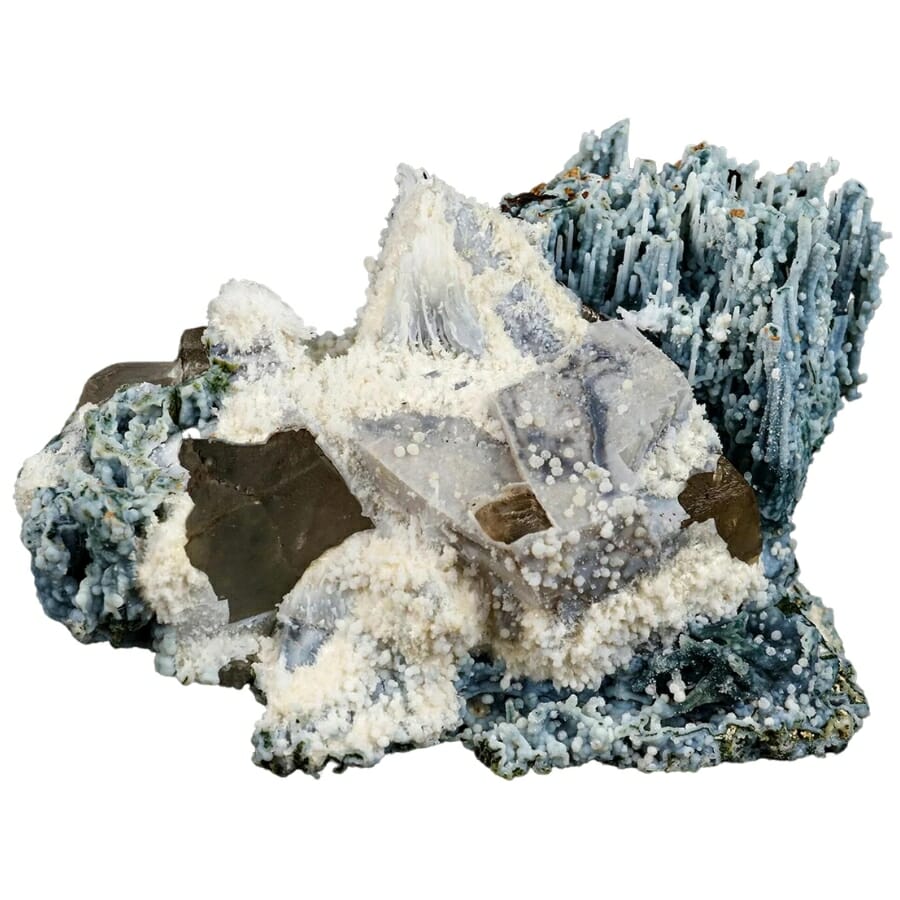
Chalcedony, a fascinating and diverse group of microcrystalline quartz gemstones, has captured the attention of jewelry enthusiasts and collectors for centuries.
Comprising a range of colors, including white, gray, blue, and various earthy tones, chalcedony is prized for its smooth texture and beautiful translucency.
It’s formed in various geological environments, typically developing within cavities and cracks of rocks.
As silica-rich solutions percolate through these spaces, they slowly deposit microscopic quartz crystals, creating intricate and unique patterns characteristic of it.
Chalcedony is a gemstone that can be used in many different kinds of jewelry, from earrings and pendants to bracelets and rings. Because it’s hard and lasts a long time, it’s a great choice for everyday wear.
It’s also highly valued in the past for healing and spiritual practices, where it’s thought to have soothing and nurturing energies. Whether people wear chalcedony jewelry or use it for its metaphysical properties, this gemstone is still loved for its classic beauty and many uses.
You can read our article about how much chalcedony is worth if you want to know its current prices.
Where you can find Chalcedony in Florida
Chalcedony can be found in many places in Florida, especially in the following places:
- Bailey’s Bluff
- Ballast Point
- Bayshore Boulevard
- Interbay Boulevard
- Tarpon Springs
Citrine
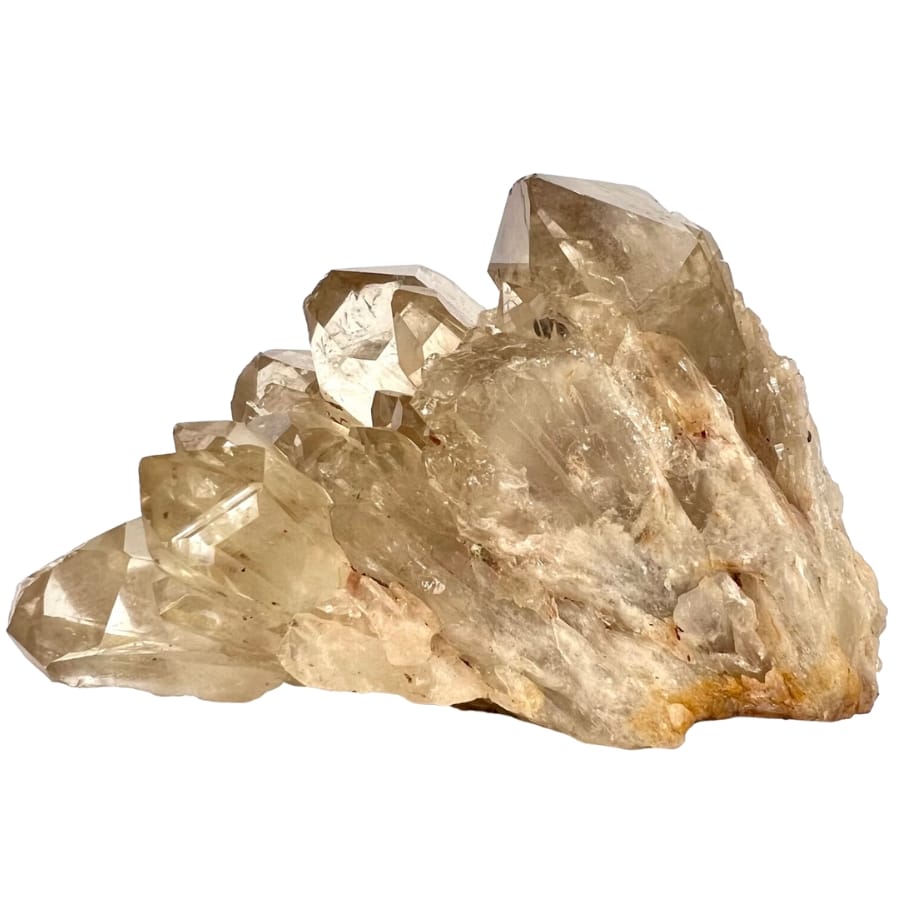
Citrine, a dazzling gemstone radiating warm yellow and golden amber hues, is a true gem of nature’s artistry. It’s a variety of quartz, and its vibrant color is attributed to trace amounts of iron in its crystal structure.
It’s formed through heat and pressure within the Earth’s crust, often from the transformation of amethyst or smoky quartz. The gem’s name originates from the French word “citron,” meaning lemon, perfectly describing its sunny and inviting appearance.
It’s created by heat-treating amethyst or smoky quartz to transform its color into the enchanting golden shades characteristic of citrine. This heat treatment process enhances the gem’s beauty and makes it more readily available for jewelry designs.
In crystal healing and metaphysical practices, citrine is believed to possess properties that attract prosperity and success. Often referred to as the “merchant’s stone,” citrine is thought to bring luck and prosperity to business ventures.
Its sunny and joyful demeanor also boosts one’s confidence and promotes a positive outlook on life. As a gemstone that brings warmth, vitality, and abundance, citrine continues to be cherished by jewelry enthusiasts and crystal practitioners alike.
Using our comprehensive pricing guide, you can learn more about how valuable citrine is.
Where you can find Citrine in Florida
You can particularly find citrine at Fort Drum Crystal Mine.
Pearl
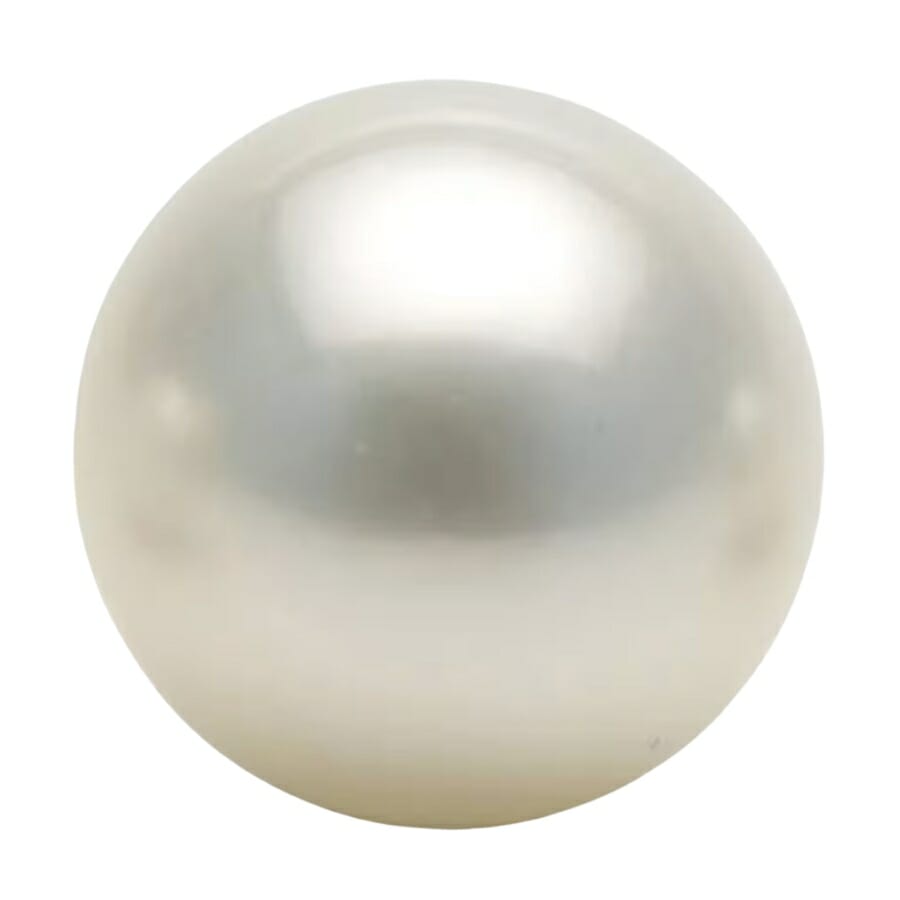
Pearls, exquisite gems that emerge from the depths of the sea, have been cherished and revered for their natural beauty for thousands of years. Unlike most gemstones, they’re organic treasures formed inside certain mollusks, such as oysters and mussels.
When an irritant, like a grain of sand or a parasite, finds its way inside the mollusk’s shell, the creature secretes layers of nacre, a combination of calcium carbonate and protein, to coat the intruder. Over time, these layers build up, creating the luminous and lustrous pearl we admire.
Historically, pearls have been associated with purity, femininity, and royalty. Many cultures have worn them as symbols of wealth and power. They have also been treasured for their calming and balancing energies, believed to bring harmony and emotional stability to the wearer.
As a gem embodying both natural elegance and symbolic meaning, pearls continue to be admired and cherished in fine jewelry and beyond.
Find out the current prices of pearls through our guide if you’re curious to know how much it’s worth.
Where you can find Pearls in Florida
There are several places you can visit to find pearls in Florida, including:
- Citrus county lakes and streams
- Pasco county lakes and streams
- Pinellas county lakes and streams
- Polk county lakes and streams
- Taylor county lakes and streams
Quartz
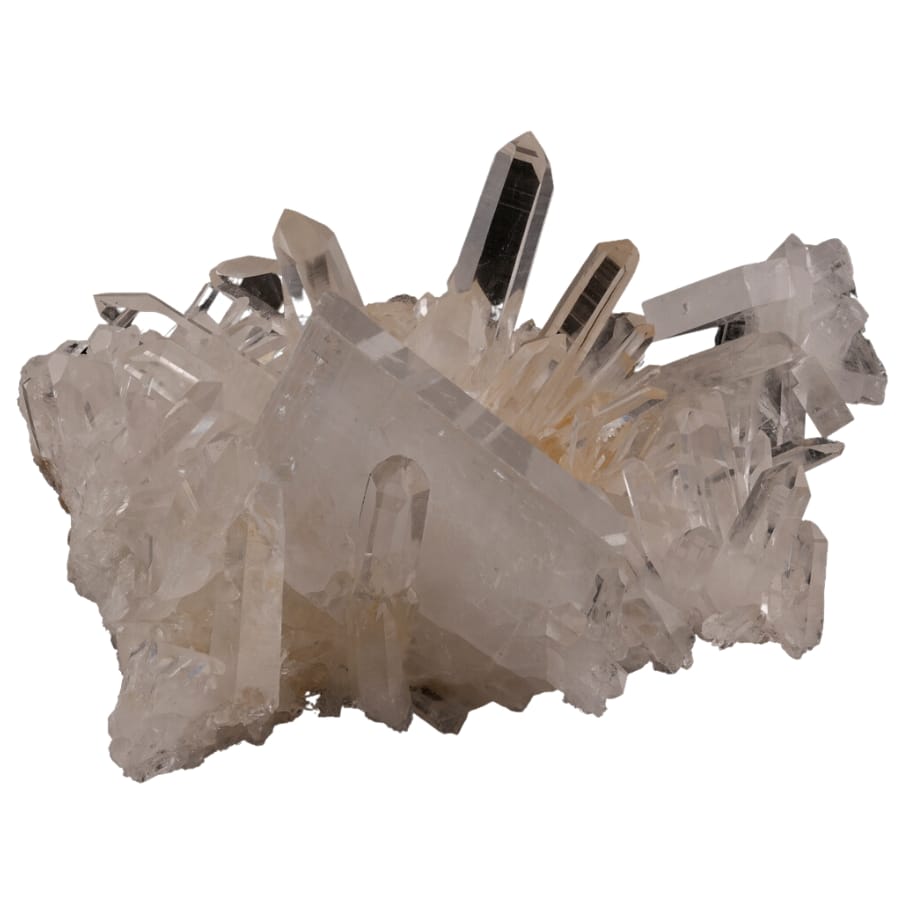
Quartz, a ubiquitous and versatile mineral, is a true marvel of the Earth’s geological processes. Composed of silicon and oxygen atoms, it’s one of the most abundant minerals on the planet and can be found in a wide range of environments.
It forms when silicon and oxygen combine under high temperatures and pressures, creating distinct crystal structures.
It’s commonly found in igneous, sedimentary, and metamorphic rocks, and its various forms showcase an impressive array of colors and patterns, from the translucent beauty of clear quartz to the mesmerizing hues of amethyst and rose quartz.
In technology, quartz crystals are used in electronic devices and watches due to their precise vibrational properties.
Its hardness and durability make it a sought-after material in construction, as it is used in making countertops and other decorative elements.
From its technological significance to its beauty and cultural associations, quartz continues to be valued and a celebrated mineral in various facets of human life.
Where you can find Quartz in Florida
The following places in Florida are abundant in quartz deposits:
- Crystal River
- Fort Drum Crystal mine
- Hillsborough River State Park
- Lake Parker
- Vero Beach
The Crystals Found In Florida
Many gorgeous crystals that are valuable to collectors and people who like crystals can be found in Florida. You can find out more about these crystals below.
We’ve also written a more detailed article about where to find crystals in Florida:
Kyanite
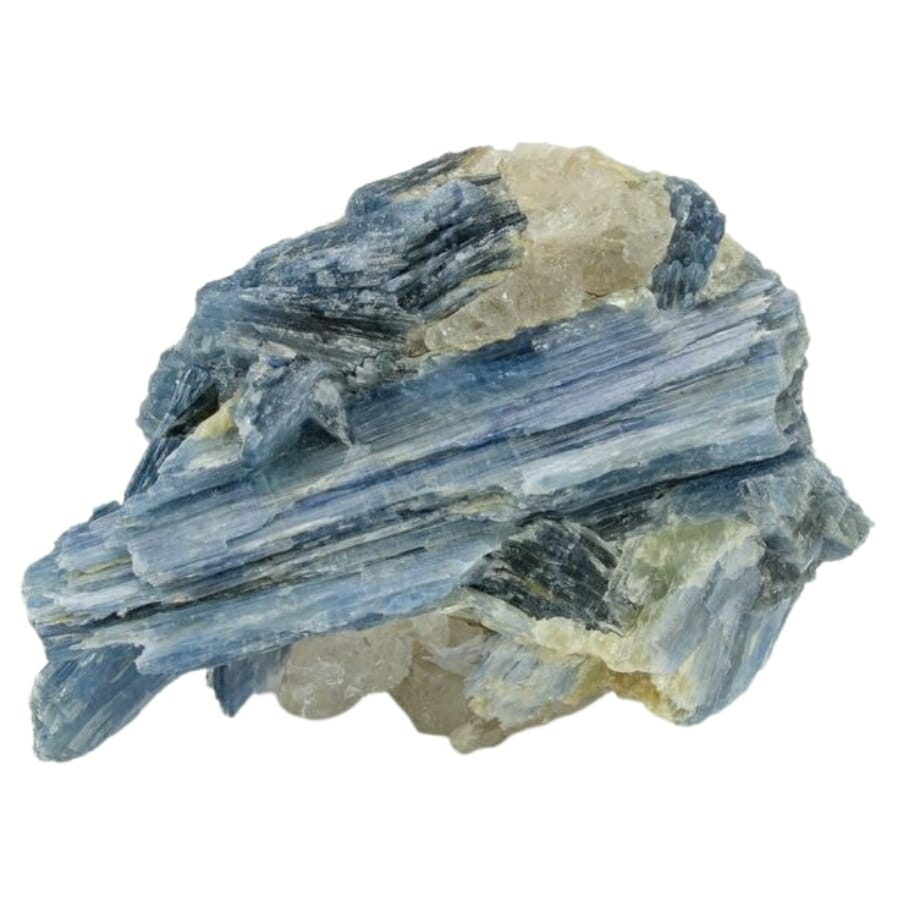
Kyanite has a distinctive bluish hue has drawn the attention of gem lovers and collectors. It’s made of aluminum silicate and forms when there is a lot of pressure and heat during metamorphism.
This usually happens in places where continental plates collide and cause many geological changes. When these forces act on rocks, minerals, and sediments that are already there, they change into kyanite crystals, renowned for their bright color and unique crystal structure.
It’s a refractory mineral that can withstand high temperatures without deforming or melting, making it an essential material in producing heat-resistant ceramics and refractory bricks used in furnaces and kilns.
Its hardness and durability also make it a sought-after gemstone for jewelry, and its metaphysical properties are believed to promote calmness, communication, and spiritual healing.
Whether adorning oneself with its beauty or utilizing its practical qualities in industries, kyanite continues to be treasured and celebrated for its remarkable attributes.
Where you can find Kyanite in Florida
Kyanites are often found at the Highland Mine in Bradford County
Malachite
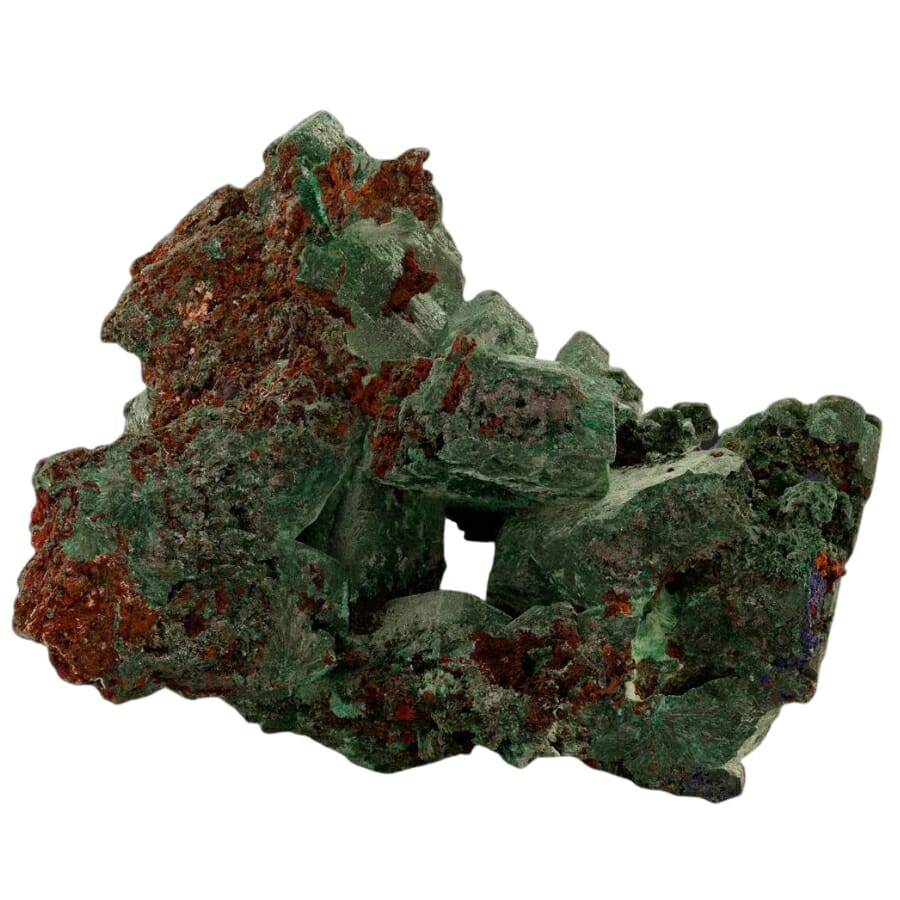
Malachite, a striking green mineral with distinctive banding patterns, is a gemstone that has captivated people for millennia. Composed of copper carbonate, it’s formed through chemical reactions involving copper-rich fluids interacting with limestone or other copper-containing minerals.
Over time, as these fluids seep into rock crevices and cavities, crystals gradually form, creating the mesmerizing patterns that adorn this beautiful gem.
Malachite has been used throughout history for various decorative and ornamental purposes, from ancient Egyptian artifacts and Russian tsarist jewelry to intricate architectural details.
It’s also believed to possess healing properties in ancient times, with some cultures using it as a protective stone and a symbol of abundance and transformation. Its high copper content has also made it valuable in the metallurgical industry, where it has been used to produce copper metal.
As a gemstone that embodies beauty, history, and cultural significance, malachite continues to be valued and admired by collectors, artists, and gem enthusiasts worldwide.
Where you can find Malachite in Florida
Malachite can be found at the Dowling Park in Florida.
Pyrite
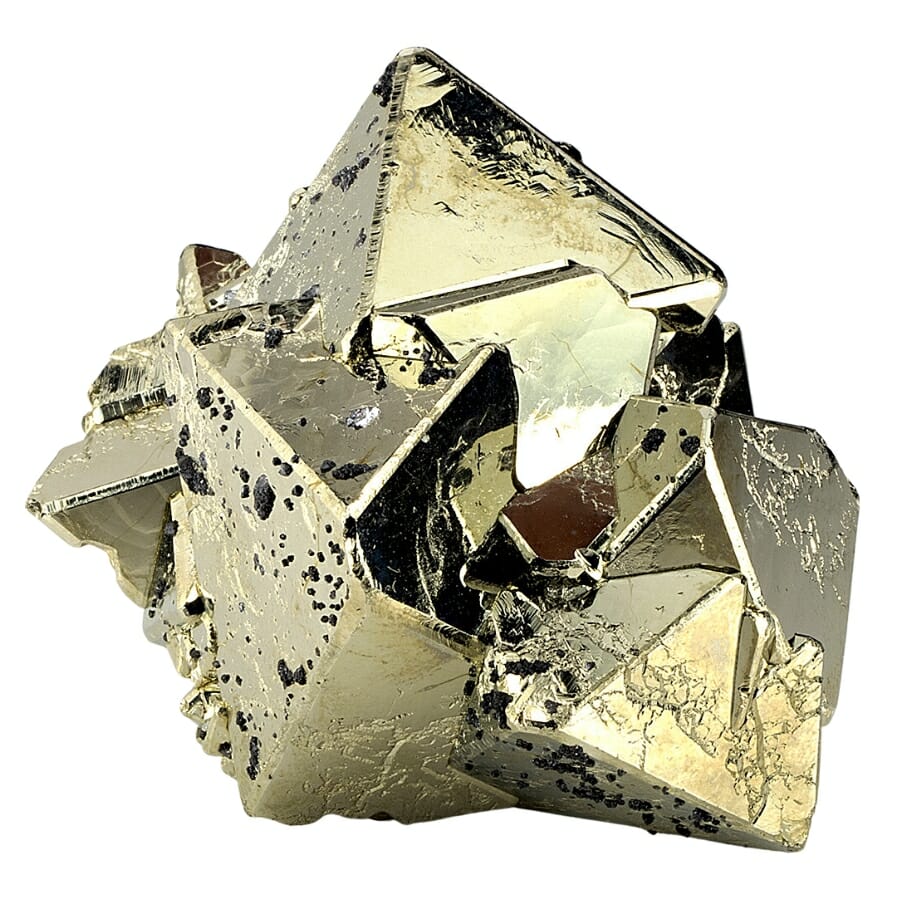
Pyrite, which is often called “fool’s gold,” is an interesting mineral that looks a lot like real gold. It’s made of iron sulfide and can be found in sedimentary rocks, hydrothermal veins, and volcanic deposits, among other places. It’s made when fluids with a lot of sulfur mix with stones with iron.
This causes cubic crystals with a metallic shine to form. It looks like shiny yellow gold, so inexperienced prospectors have mistaken it for real gold. This is where the term “fool’s gold” comes from.
It’s often associated with confidence and willpower, encouraging individuals to pursue their goals with determination. Moreover, pyrite’s high sulfur content makes it valuable in producing sulfuric acid and other chemical processes.
Its distinctive appearance, practical applications, and historical significance make pyrite a prized mineral with an enchanting appeal.
Where you can find Pyrite in Florida
You can find pyrite deposits at the Lost Mines of Atlantis in Florida.
Rutile
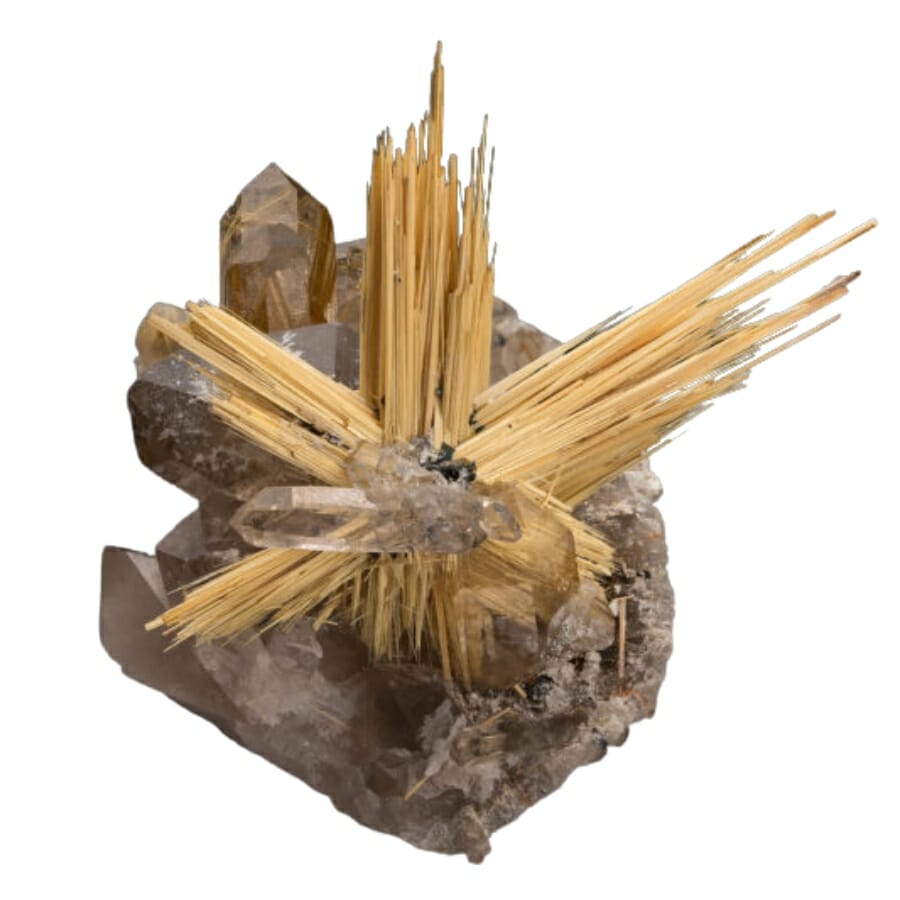
Composed of titanium dioxide, rutile forms within igneous and metamorphic rocks as an accessory mineral. It’s often associated with minerals such as quartz, feldspar, and garnet.
They are distinguished by their distinctive needle-like or prismatic shapes, which give rise to their name derived from the Latin word “rutilus,” meaning “reddish” or “glowing.”
This mineral’s golden color and ability to display asterism, a star-like optical effect, make it a treasured gemstone among collectors and jewelry enthusiasts.
Sometimes, rutile crystals are embedded within quartz, creating striking patterns and textures. This variety is often used in decorative items and jewelry for its eye-catching appearance.
As a source of titanium dioxide, rutile is a vital material in producing titanium metal and titanium dioxide pigment. Titanium is widely used in aerospace, marine, and medical applications due to its high strength-to-weight ratio and corrosion resistance.
The pigment derived from it is a key ingredient in white paints and coatings, making it essential in the construction and automotive industries.
With its mesmerizing appearance and practical applications, rutile remains a gemstone that continues to be valued for its diverse contributions to the arts and technology.
Where you can find Rutile in Florida
You can find rutile deposits at the Skinner Mine.
Zircon
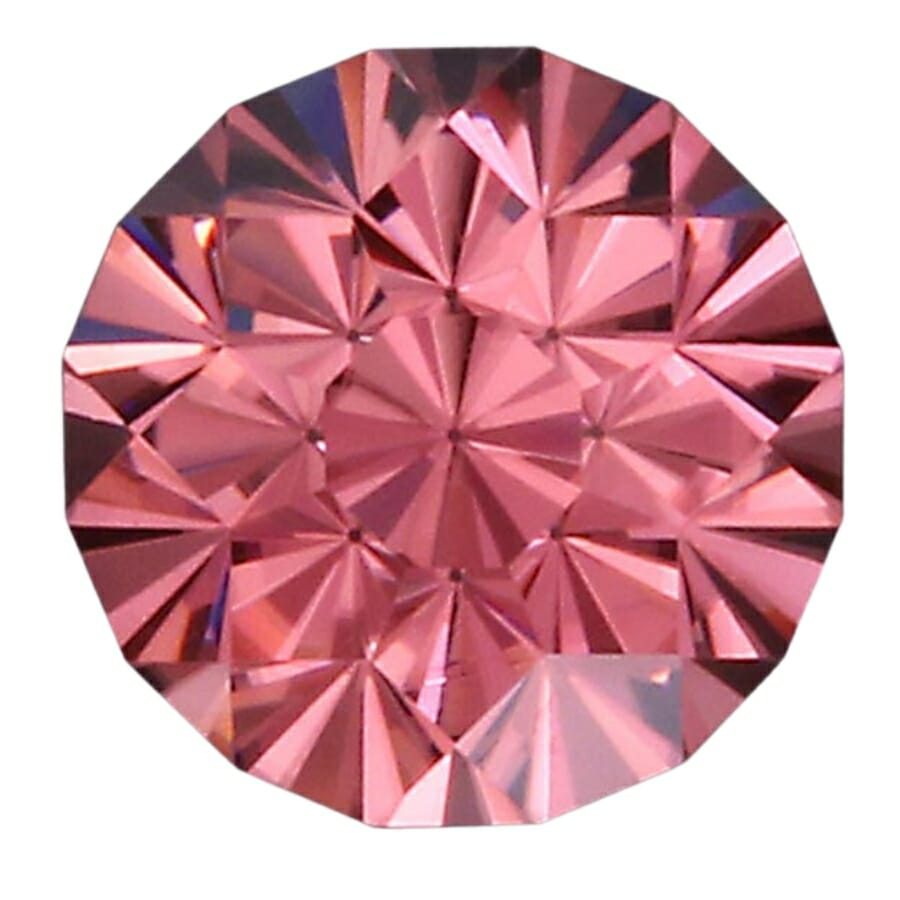
Made of zirconium silicate, zircon forms in various geological environments, including igneous rocks and metamorphic terrains. It’s often found in beach sands and riverbeds, as it is highly resistant to weathering and erosion.
Zircon crystals display various colors, from colorless and pale yellow to rich brown, blue, and rare reds. Its brilliance and fiery sparkle have made it a popular gemstone for jewelry throughout the ages.
It’s known for its high refractive index, which enhances its brilliance and light dispersion. It’s often used in high-quality jewelry settings, adding extra radiance to fine pieces.
It’s one of the oldest minerals on Earth, with some specimens dating back over 4 billion years. Its ability to retain uranium and thorium isotopes makes it invaluable in geochronology, allowing scientists to date rocks and determine the Earth’s history.
Moreover, its brilliance and luster have made it a favorite gemstone in fine jewelry. As a gem with rich history, geological significance, and striking beauty, zircon continues to be cherished and admired by gem enthusiasts and collectors alike.
Where you can find Zircon in Florida
Zircon is abundant in these places in Florida:
- Highland Mine
- Skinner Mine
The Most Valuable Rocks and Minerals in Florida
Now that we’ve discussed the different rocks, minerals, and gems in Florida, let’s talk about the most valuable ones. If you’re lucky you might find them while exploring the state.
Staurolite
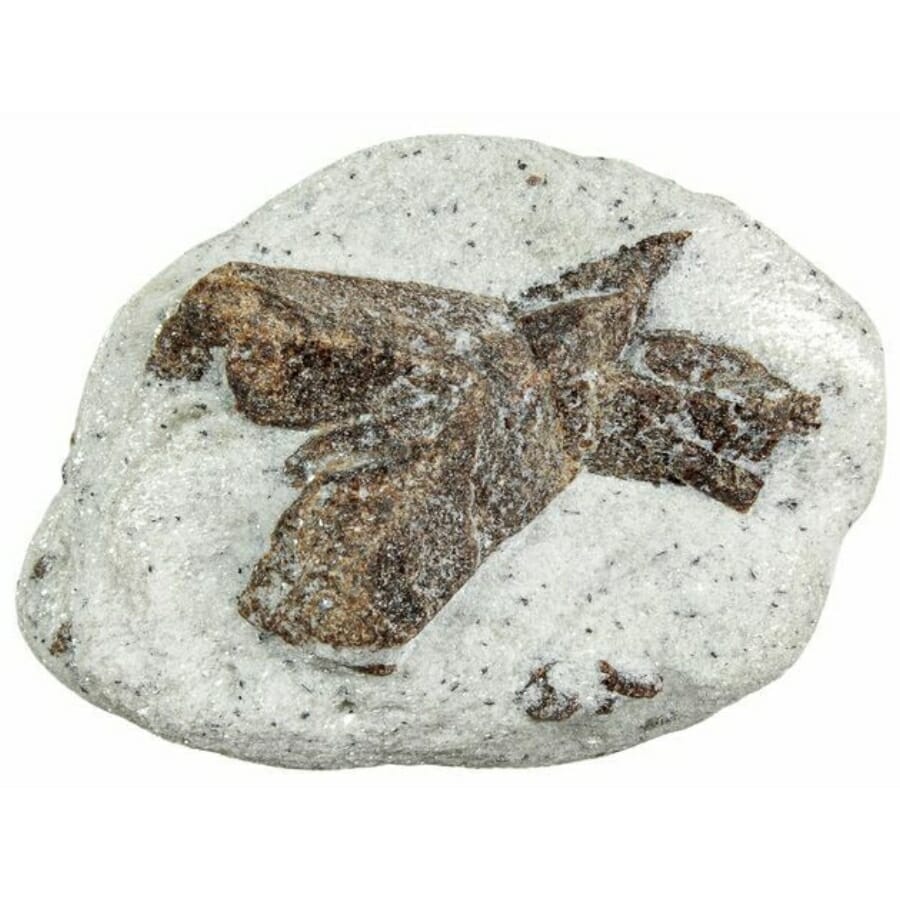
Staurolite is renowned for its distinctive cruciform or cross-shaped crystals, earning it the nickname “fairy stone.” Composed of iron aluminum silicate, it forms under high-pressure metamorphic conditions during the transformation of sedimentary rocks.
As these rocks undergo intense heat and pressure, minerals in the original rock recrystallize and rearrange, forming the characteristic of cross-shaped crystals.
These crystals are often found in schist and gneiss rocks, and their enchanting appearance has sparked fascination and folklore in various cultures worldwide.
Collectors and enthusiasts highly prize these unique cross-shaped crystals, often polished or used in jewelry and decorative pieces.
Staurolite has been associated with various legends and folklore, believed to possess protective and healing properties. In some cultures, staurolite crystals were considered amulets that brought luck and protection to travelers and those venturing into the unknown.
Additionally, staurolite’s occurrence in metamorphic rocks and its unique crystal structure have made it a fascinating geology study subject.
Its symbolic significance and natural beauty make staurolite a cherished and treasured mineral that continues to capture the imagination of those who encounter it.
Where you can find Staurolite in Florida
You can find staurolite deposits at the Trail Ridge Plant in the state.
How to Identify The Rocks and Minerals You Find
You don’t need a lot of knowledge about rocks and minerals or complicated tools to tell them apart. If you want to identify a sample independently, you can do these simple tests.
Examine its visual appearance
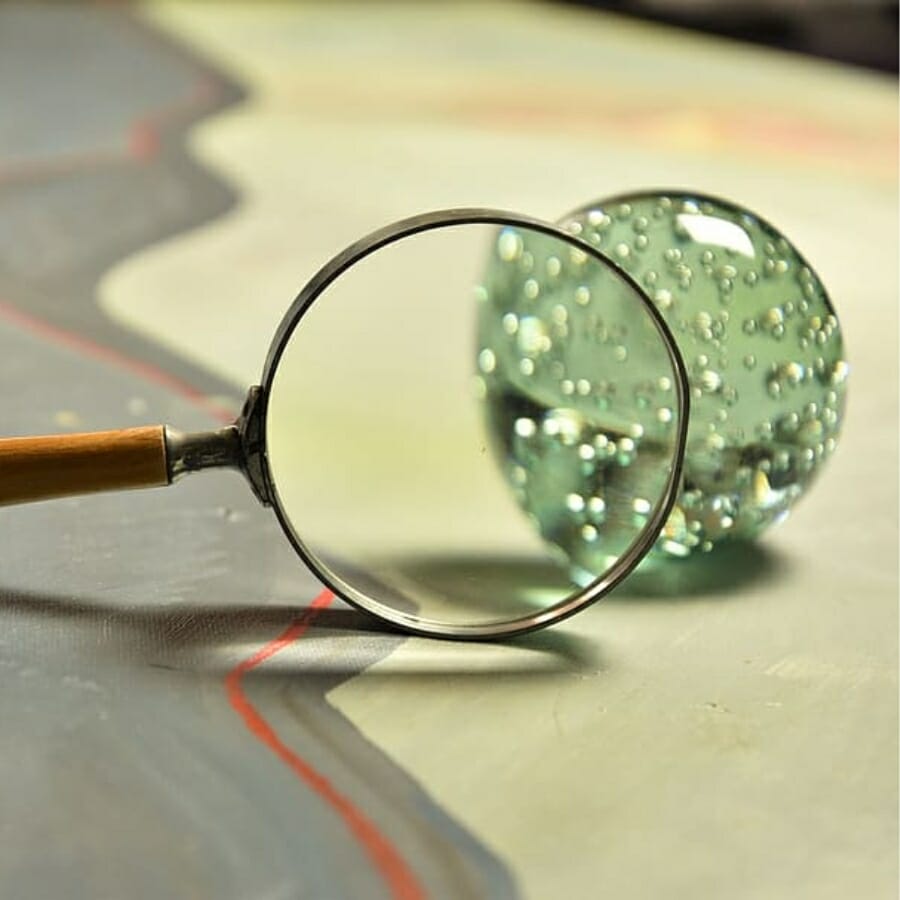
Start by looking at the rock or mineral’s color, texture, and overall look. Take note of things like the shape, layers, or patterns of the crystals. Some minerals have unique properties that can help identify them.
A hand lens or magnifying glass can help you examine the specimen in greater detail, especially for small crystals or fine-grained rocks. Remember, identifying rocks and minerals requires practice and a keen eye for detail.
If unsure, it is always best to consult with a professional geologist or mineralogist for accurate identification.
Perform a hardness test
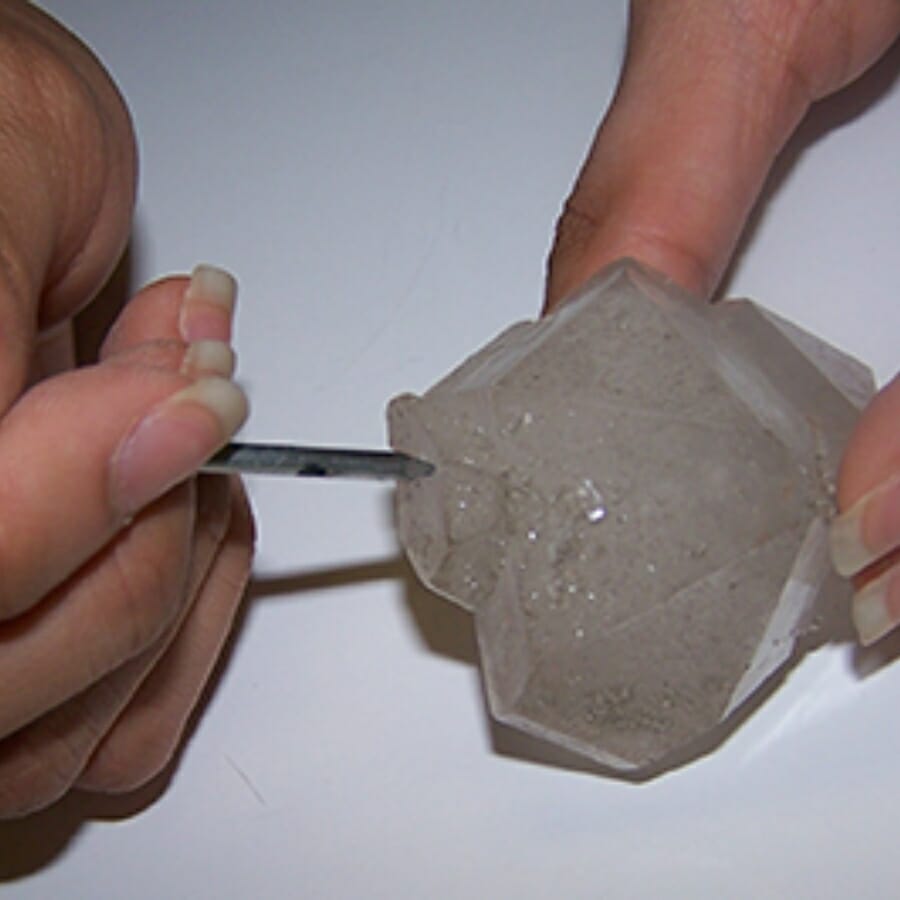
Performing a hardness test on a rock or mineral is a simple yet effective way to determine its relative hardness compared to known minerals on the Mohs hardness scale.
The Mohs scale ranks minerals from 1 (softest) to 10 (hardest) based on their ability to scratch or be scratched by other materials.
The hardness test is relative, providing a ranking rather than a specific numerical value. It’s a valuable tool for quickly assessing the hardness of minerals and rocks in the field or at home without requiring specialized equipment.
Remember that this test may not be suitable for fragile or valuable specimens, as it involves physically scratching the surface. Always use caution and test inconspicuous areas when examining delicate or precious rocks or minerals.
Do a streak test
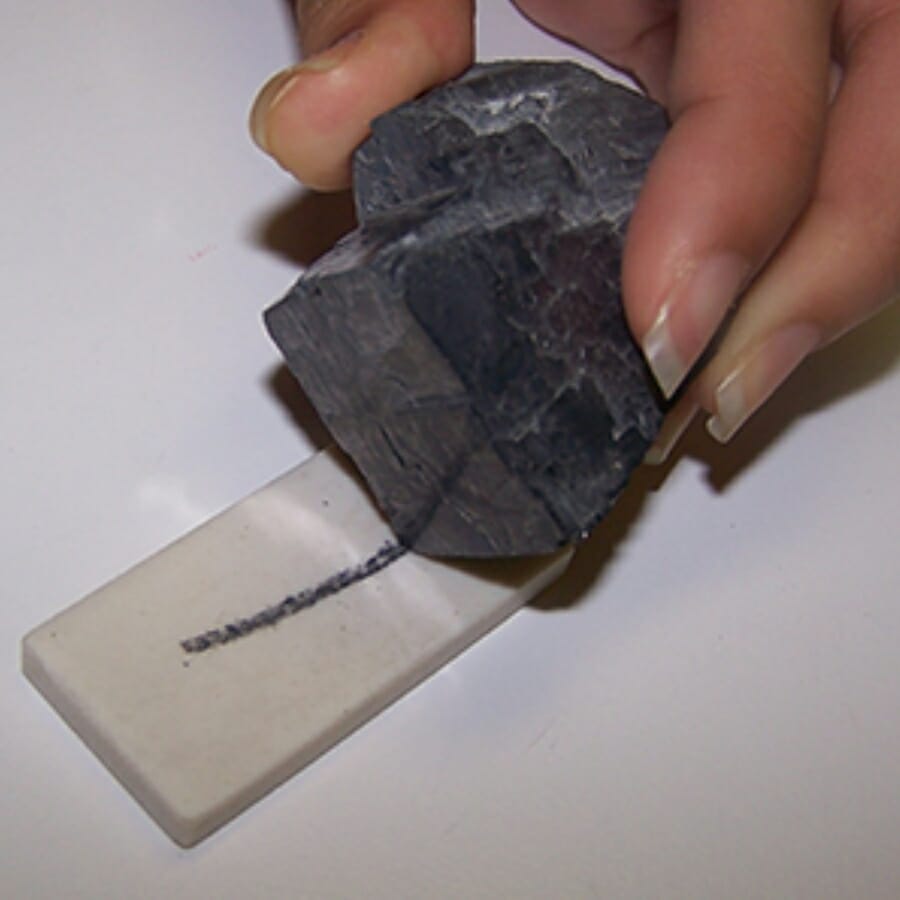
A simple and useful way to determine what color a rock or mineral’s streak is is to do a “streak test.” The color of the powdered mineral is the color of the streak, which may differ from that of the mineral as a whole.
You will need an unglazed porcelain streak plate, a small, white ceramic tile available in most mineral and rock testing kits or geology supply stores.
Hold the streak plate firmly and the rock or mineral in one hand. With the mineral at about a 45-degree angle to the streak plate, firmly rub the mineral against the streak plate’s surface, applying enough pressure to leave a visible streak.
Examine the streak left behind on the streak plate. Note the color of the powdered mineral. The streak color may differ from the mineral’s overall color due to impurities or variations in the crystal lattice.
The streak test is beneficial for identifying metallic minerals or minerals with hard and opaque surfaces. It’s a non-destructive test, as it only involves rubbing the mineral against a streak plate without damaging the specimen.
Remember that the streak test may not be effective for minerals that are too soft or transparent to produce a distinct streak. Other identification tests may be necessary, such as hardness, cleavage, and crystal habit.
Measure its specific gravity
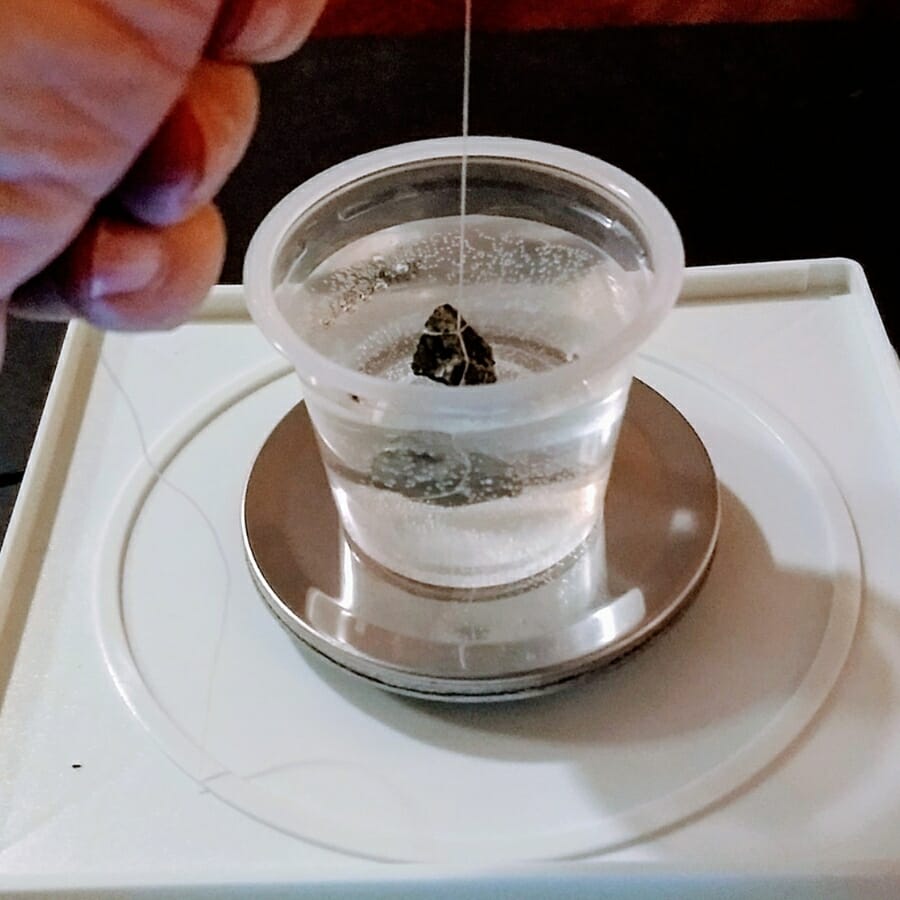
Measuring the specific gravity of a rock or mineral is a straightforward process that requires a few basic tools. The specific gravity (SG) is the ratio of the density of the material to the density of water.
Use a digital scale to measure the weight (mass) of the rock or mineral specimen in grams (g). Record this weight as “A.” Fill a graduated cylinder or a beaker with water to a known volume, and record the volume of water in milliliters (ml). This volume will be your “B” value.
Carefully lower the rock or mineral specimen into the water-filled beaker or graduated cylinder, ensuring it is fully submerged. The volume of the rock or mineral will displace the water. Record the new volume of water and specimen together as “C.”
Use SG = (A / (C – B)).
- “A” is the weight (mass) of the specimen.
- “C – B” is the volume of the specimen, calculated by subtracting the initial volume (B) from the final volume (C) of the water and specimen together.
The specific gravity value you calculate is dimensionless, as it is the ratio of densities. For example, if the SG calculation results in 2.5, the rock or mineral is 2.5 times denser than water.
Keep in mind that specific gravity is a relative value and provides essential information about a mineral’s density compared to water. This test is useful for identifying minerals and distinguishing them from similar-looking specimens.
Using geological maps and guides

Using geological maps and guides can be valuable in identifying rocks and minerals in a specific region.
Choose a geological guide or field book specific to the area you are exploring. Look for resources that cover the geology, rocks, and minerals commonly found in that region. These guides often provide detailed descriptions, photographs, and maps of the local geology and mineral occurrences.
Geological maps often label different rock formations with specific colors and symbols. Observe the rocks in the field and match their appearance and characteristics with the information on the map. Look for clues such as layering, texture, and color to narrow down potential matches.
Remember that identifying rocks and minerals can be challenging, especially for beginners. Patience, practice, and continuous learning are essential for improving identification skills.

